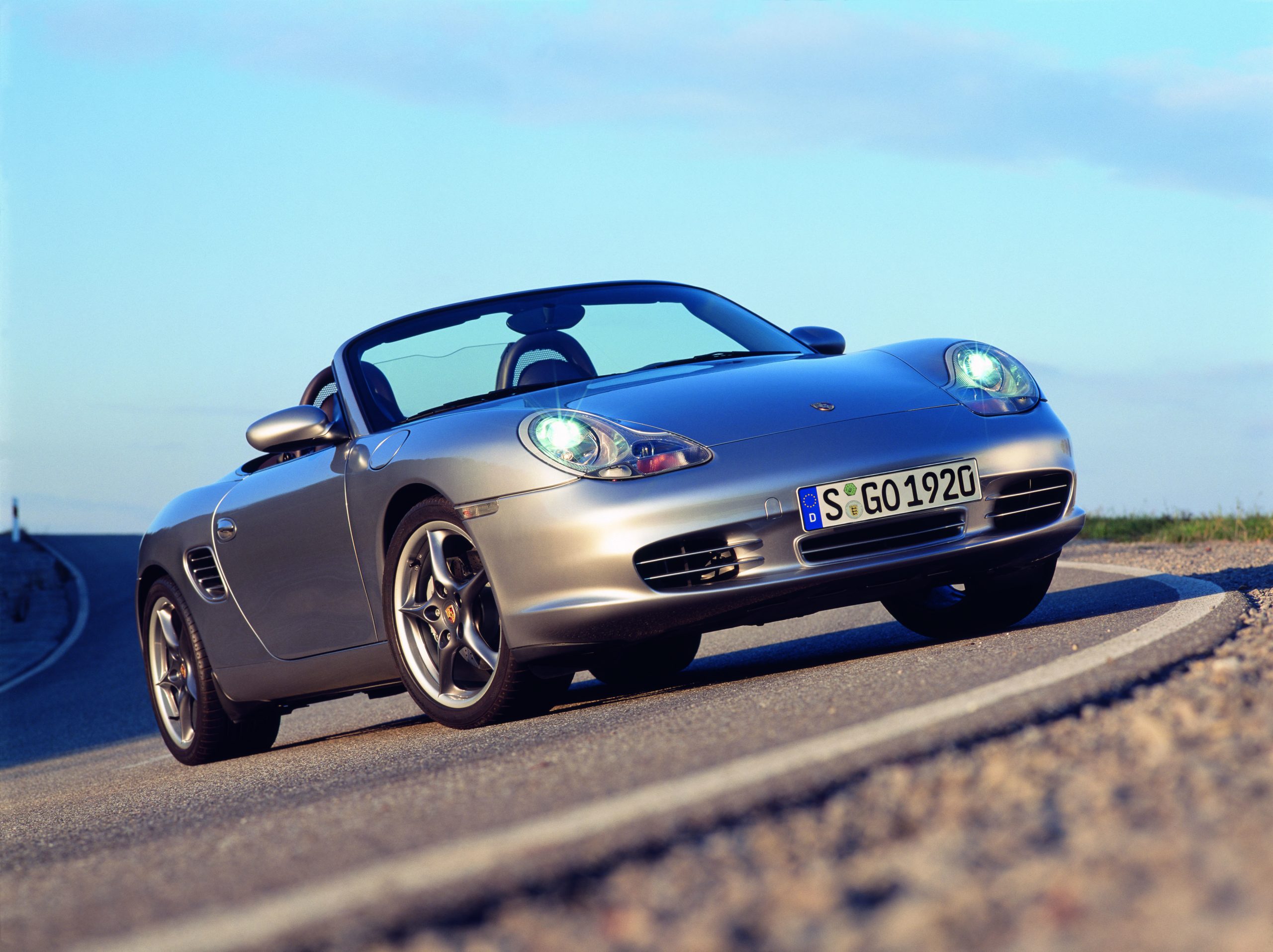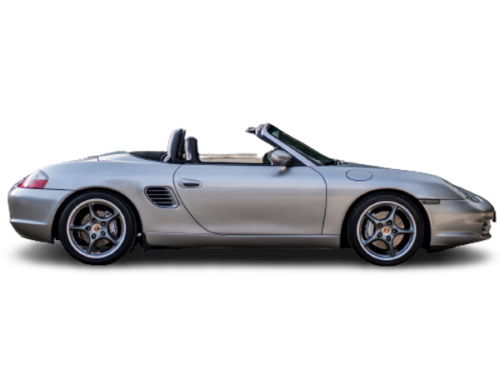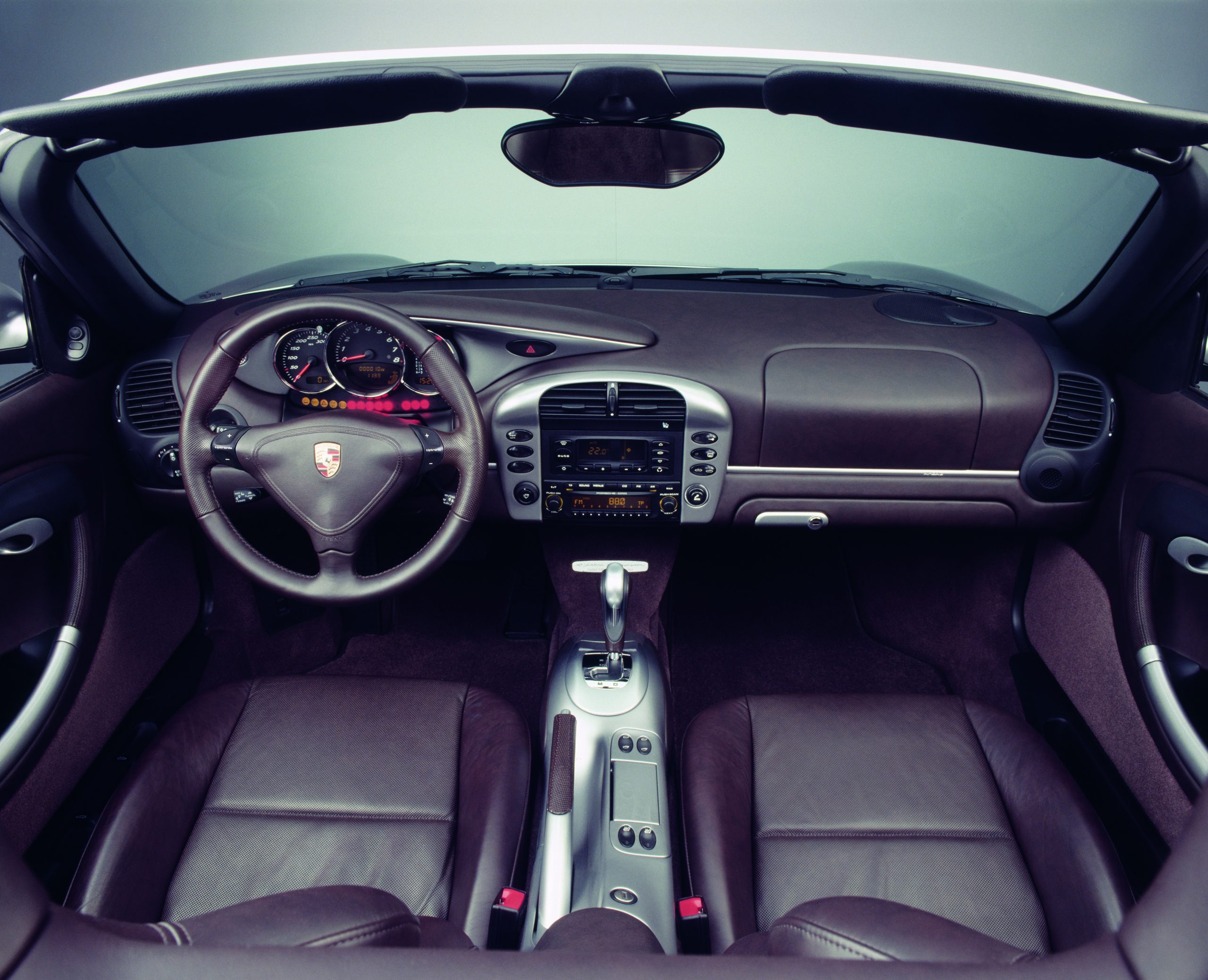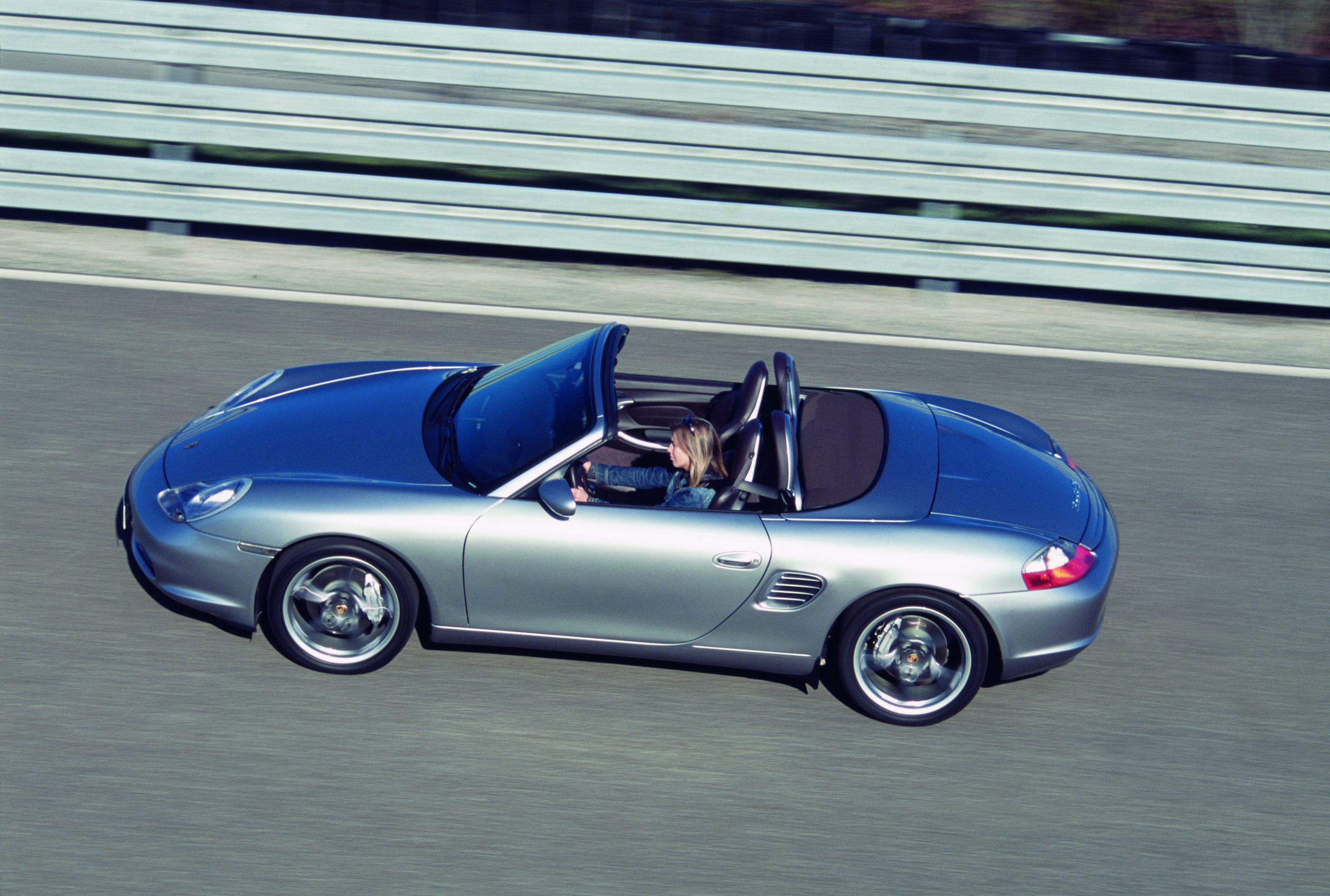(2004) Porsche Boxster S 550 Spyder 50th Anniversary Edition – Ultimate Guide
Porsche Boxster S Special Edition
In 2004, the Boxster S Special Edition, also called 550 Spyder Boxster S Special Edition was introduced. To celebrate the last model year for the 986, Porsche decided to release this limited special model of Boxster, and only 1,953 of these cars were made in honor of the original Porsche 550 Spyder, launched in 1953. 500 cars were made for the US Market which was the biggest market.
The Porsche Boxster S 550 50th Anniversary Edition uses the Boxster S 3.2’s slightly tuned powerhouse. It got slightly more power, coming in at 266 horsepower, officially making the Boxster Anniversary Edition the most powerful model of the 986 variants.
The color of the special model is the Porsche Carrera GT’s GT Silver Metallic. Unlike other models, the color of the top is dark brown Cocoa. The model is also distinguished by a special double exhaust pipe where pipes overlap. They also got a unique cocoa-brown full-leather interior as standard with grey natural leather as a no-cost option. Each car also had special interior paintwork, a high-end BOSE sound system, two-tone grey and silver 18 inch Carrera wheels (unpainted as another zero-cost option), 5 mm (0.2 in) wheel spacers, the Boxster S sport exhaust, the M030 option sports suspension, and a plate on the center console piece commonly known as the “batwing” showing the production number. Only on the American market cars were the rear turn signals red rather than clear.
Press Release
Porsche celebrates the 50th anniversary of its legendary sports roadster by launching its Spyder special edition
Stuttgart. The Porsche Boxster is a worthy successor to the legendary 550 Spyder dating from 1953: common to both are the mid-engined roadster concept, low weight, excellent agility, and a high level of driving pleasure. Porsche is now celebrating the 50th birthday of the 550 Spyder by launching a powerful Boxster S special edition limited to 1953 units and bearing the name “50 Years of the 550 Spyder”. It is to be premiered in Detroit/USA early in January 2004, and its introduction on international markets is scheduled for March 2004. The list price on European markets will be 50,900 Euro. In Germany the car will sell at 59,192 Euro including added-value tax and specific national charges.
The Boxster and the 550 Spyder share a striking number of common features., starting with the body lines, which are of timeless elegance and clearly demonstrate their origin and relationship. Then as now, every part of the car is dedicated to the demands of the enthusiastic driver. The Porsche Boxster too has already become a modern classic.
To enhance the Boxster driving experience still further, Porsche engineers have given the special “50 Years of the 550 Spyder” edition a series of sought-after equipment details and technical features that have not been available for the Boxster so far. The output of the Boxster S’s 3.2-liter flat-six engine goes up by 6 bhp to 266 bhp (196 kW) at 6,200 rpm. The special edition has a top speed of 266 km/h (standard Boxster S: 264 km/h) and sprints from zero to 100 km/h in a mere 5.7 seconds (Tiptronic S: 6.4 seconds). Its maximum torque of 310 Nm is available at 4,600 rpm.
The exhaust system, which has a specially styled, stainless-steel tailpipe, delivers the typical Porsche sound. Porsche technicians have reduced the 6-speed gearbox’s shift travel by 15 percent, a noticeable benefit that contributes to even greater driving pleasure whenever the car is accelerated. Tiptronic S, permitting driver selection of the chosen gear at shift paddles on the steering wheel, is an optional extra.
True roadster character is emphasized by lowering the body by 10 millimeters and by especially sporty suspension settings. This sports suspension improves the car’ s roadholding still further and permits higher lateral acceleration values. Porsche Stability Management (PSM) is installed as a standard feature on this special edition, to ensure optimum safety in all driving situations.
The brakes are another important safety feature. The drilled brake disks have a diameter of 318 millimeters at the front and 299 millimeters at the rear. Exclusively for this special edition, the four-piston aluminum brake calipers of monobloc design have an aluminum paint finish. They are easily visible behind the larger 18-inch Carrera wheels (the standard model has 17-inch wheels). The spokes are painted in seal gray and provide additional visual emphasis. A colored Porsche coat-of-arms adorns each wheel hub cover. Five-millimeter wide spacers at all four wheels give the special “50 Years of the 550 Spyder” edition an even more powerful appearance and firmer road stance. Another feature that sets this model apart from the standard Boxster S are the silver-painted grills above the openings in the rear struts, which recall the closed rear view of the 550. The Boxster S lettering at the rear is chromium plated and polished. The color of the padded front of the safety roll bars matches the interior. An on-board computer, Litronic headlamps with dynamic beam angle adjustment and a cleaning system are also standard.
Most of the 550 Spyders built in those days were painted in silver. The special edition has therefore been finished in gleaming silver metallic, a color so far reserved for the Carrera GT and the “40 Years of the 911” model.
The soft top is in Cocoa, a dark brown color used by Porsche for the first time on this special edition. The same two colors dominate the car’s interior, with matching carpet and floor mats with the Porsche inscription.
Dark gray natural leather is available as an alternative. In this combination the carpets and the folding top are in black. Both leather equipment lines have exclusive visual features that give the interior a special character. It can be seen and felt on the center panels of the standard heated sport seats, the handbrake lever, the gear lever gaiter, the inside door handles and the padded sport steering wheel. The black dials have chromium-plated decorative rings. Painted in GT-silver metallic, the seat back shells, the rear section of the center console, the handbrake lever, the grooved bar on the dashboard, the switch panel and the back of the safety roll bars form a color contrast. The ball-shaped gear-lever knob is made of aluminum combined with Cocoa leather. The (optional) Tiptronic gear shift cover is highly polished, like the Boxster S lettering that stands out well against the black door sills.
This Boxster S special edition bears a limited-edition plate on the center console indicating the car’s production number. The automatic air conditioning and top-quality Porsche CDR-23 radio with audio package are standard, and also a windbreak.
Porsche introduced the 550 Spyder in October 1953 at the Paris Motor Show. The two-seater was the first sports car specially designed in Stuttgart-Zuffenhausen with racing in mind. In the years that followed the Spyder, which weighed only 550 kilograms, scored numerous triumphs on racing circuits and in the then popular road races. These successes are a mosaic element contributing to the Porsche brand’s fame and its current familiarity among the general public. The type designation of the racing sports, incidentally, was not derived from its weight as is sometimes assumed. It was, in fact, the 550th Porsche design project.
The 550 Spyder has retained a secure place in the hearts of car enthusiasts through its performance in the Carrera Panamericana in 1954. On the fifth and last occasion that the world’s toughest road race was held, Hans Herrmann came third in the overall ranking, directly behind two sports cars with substantially larger engines and won his class.
This was followed by countless successes in motor sport, earned by the factory team and by private entrants. The 550 was powered by a four-camshaft 1,498-cc engine developing 110 bhp. This was designed by von Dr. Ernst Fuhrmann, who later became chief executive officer of Dr. Ing. h.c. F. Porsche AG, Stuttgart, and made a significant contribution to Porsche’s racing triumphs right up to the nineteen-sixties.















